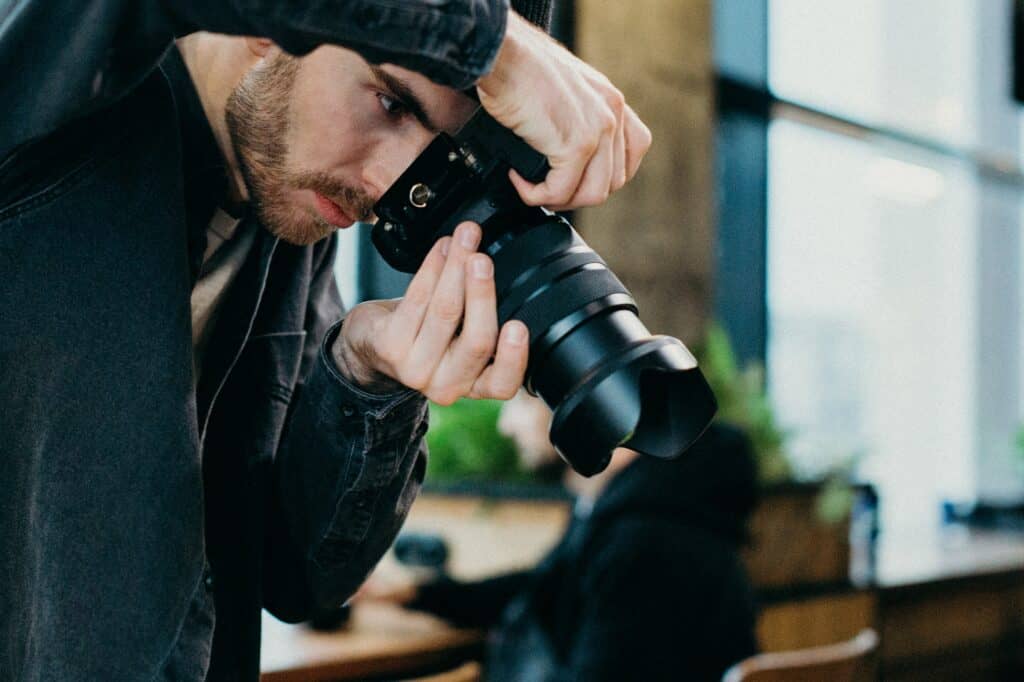Photography is full of complicated terms that new photographers may not have heard of. Vantage point is one such term! Vantage point impacts your photography tremendously, so it’s a good idea to be well versed on the phrase. Here is our guide to vantage points!
The definition of vantage point in photography is the same as its definition everywhere else- vantage point is the perspective at which you see. With photography, vantage point refers to the perspective you take a photograph at (so, it’s what your lens sees!).
In a more complicated concept, changing the physical position of the camera and the lens will alter the relationship between what is seen and the subject you are capturing. Vantage point as a term describes this relationship in the most accurate fashion. When thinking of vantage points in these words, that opens the door to a variety of questions such as the types of vantage points, how vantage points impact composition, and its importance as a whole.
The Importance of Vantage Point
Vantage point is significant because that affects your photography just as much (if not even more) than the equipment you choose to use. The vantage point expresses your point of view (literally) and helps differentiate you from other photographers. Vantage point is also a great way to show photography at its finest- expressing the world in ways that the average person may not have seen or considered.
All of this being said, remember that the vantage point needs to add to the image and not detract from it. When discerning what angle to shoot from, pose these questions to yourself:
- How could I add interest to the subject?
- How can I show the viewer a new perspective on this subject?
- Do I always stand in this position when taking photos?
- What else can I include in the frame to tell the story?
- What’s on the other side of the subject?
Your answers will help figure out the best vantage point.
The Types of Vantage Points
There are five primary vantage points, with some subcategories sprinkled in there.
Eye Level Vantage Point

As the name implies, eye level vantage point is taken at a normal stance. What you see naturally is what you shoot. Using an eye-level vantage point can feel quite direct and intimate. It also conveys a sense of empathy in an image.
For the eye level vantage point, it can be either your eye level or the subject’s eye level! For pet photography, shooting at the pet’s eye level is a very common and effective technique, often encouraging the viewer to form a bond with the animal in the image.
This certainly has its place in many types of photography, but it doesn’t really push the envelope very much. That being said, the directness itself can tell a powerful story.
Low Vantage Point

Also known as a “worm’s eye view”, the low vantage point is one of the more unique vantage points. This view is often utilized in nature settings with beautiful trees, but also provides a very uniquely composed shot when used with living subjects or inanimate objects.
Try pointing your camera up at the buildings from the ground! With many cameras having tilting or variable LCD screens now, this should be even easier to do than ever before.
You can use a low vantage point to instill a sense of authority and awe in your image. Subjects gain a sense of importance, power, and scale when taken from these angles. This is because the subject fills even more of the frame than they did before.
High Vantage Point

High vantage points are taken above the subject at a higher angle. You can point the camera down towards the subject at an angle by being above them, or by photographing a very high up subject.
Depending on your subject, you can shoot from a high vantage point in many ways. You may be able to do this by using a ladder or climbing up a tree or onto a roof .If you intend to take emphasis away from certain aspects of your subject, then elevating the camera is a great way to make everything below your camera seem smaller as a result.
Aerial View

Not to be confused with a high vantage point- aerial view is a bird’s eye view of the world from the very top looking down. This is seen mostly with drone photography, which is a remotely operated flying aircraft that carries a camera. The camera is pointed down towards the subject. Bird’s eye view can make absolutely wondrous photographs from a perspective most people have no access to see other than through a photograph.
Closeup View

The close-up shot allows you to get up close and personal to your subject, often transforming the way we would ordinarily perceive it. This is most common with Macro photography!
Macro is a unique type of photography in which small objects are photographed so close up that they are made to look life-sized or larger than they are in a photograph. Macro photography is fascinating in the sense that it allows one to see small objects or details in a whole new way, exploring the details of the world around you.
This is a powerful vantage point for breathing new life into everyday things.
In conclusion, truly experiment with vantage points and differing angles to breathe new life into your images! This can also help you develop your own personal style and aesthetic with the images.

